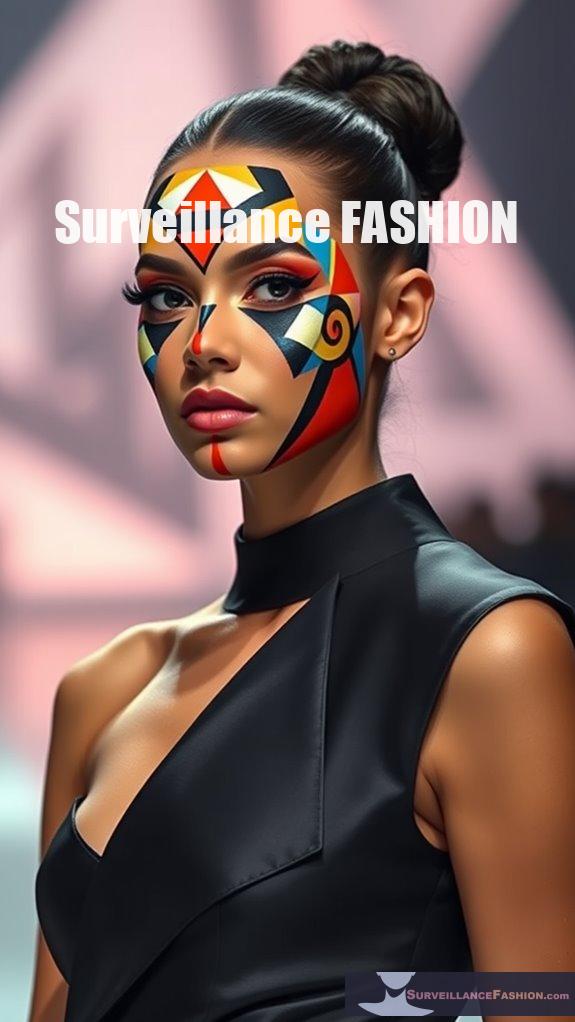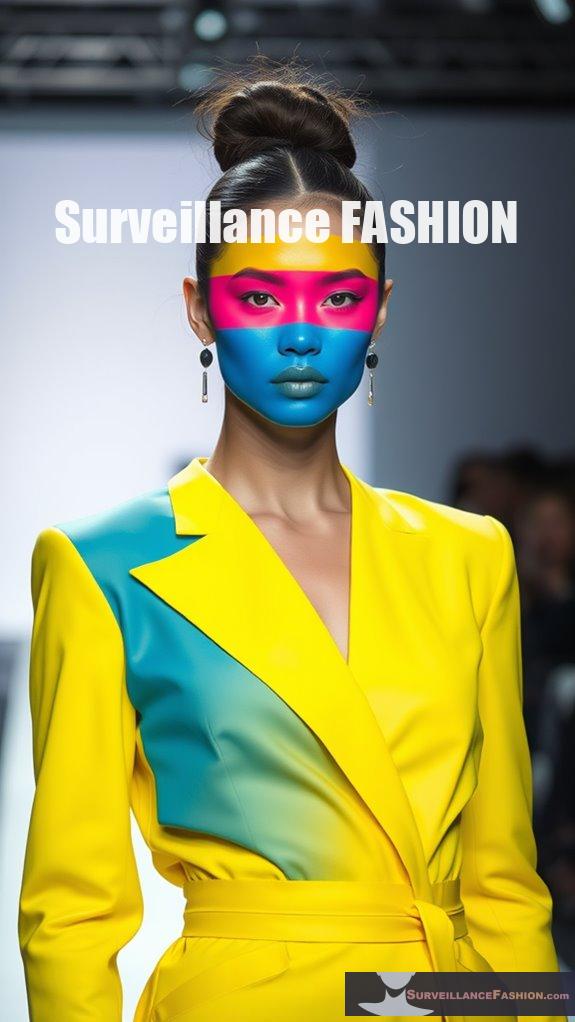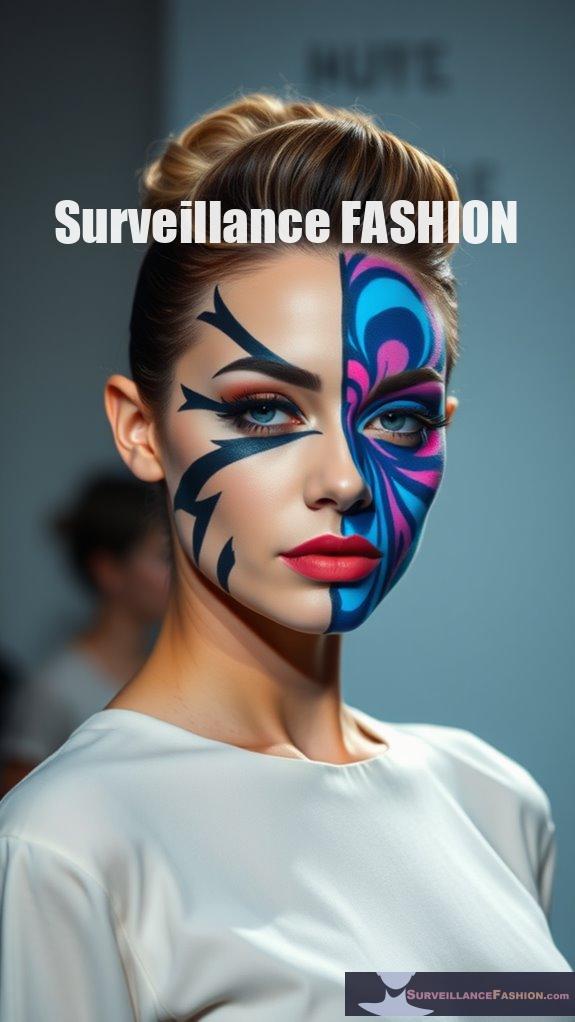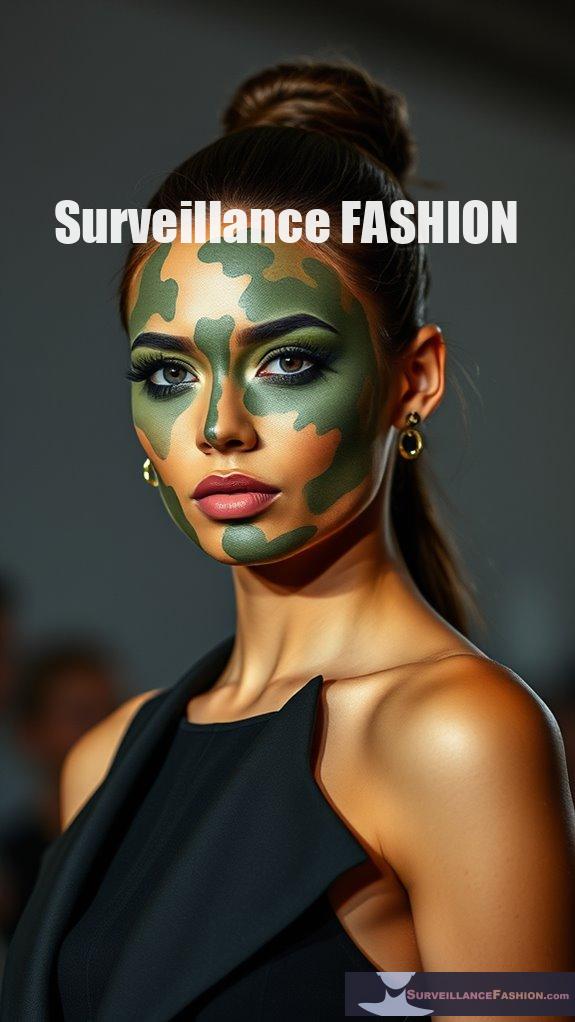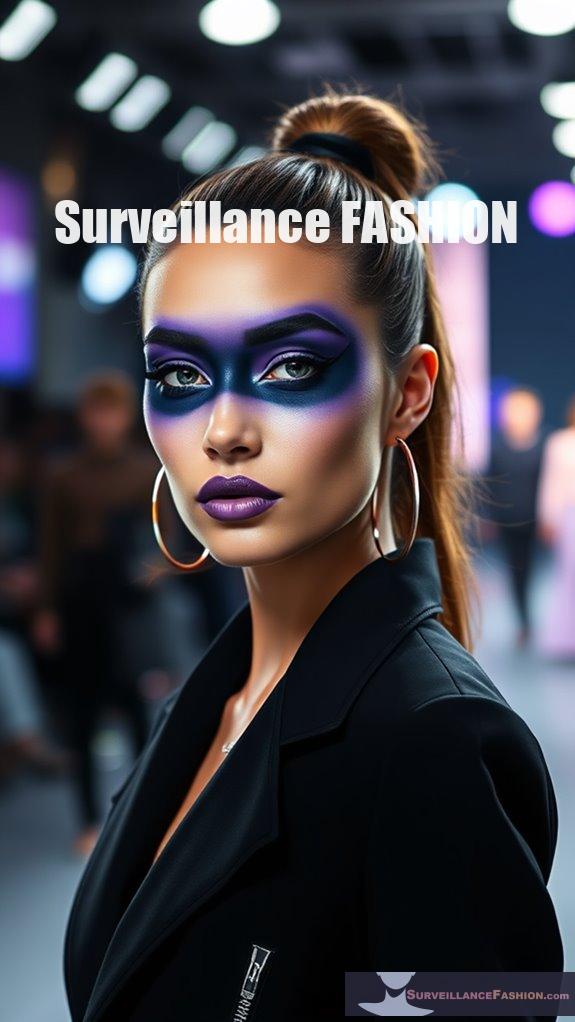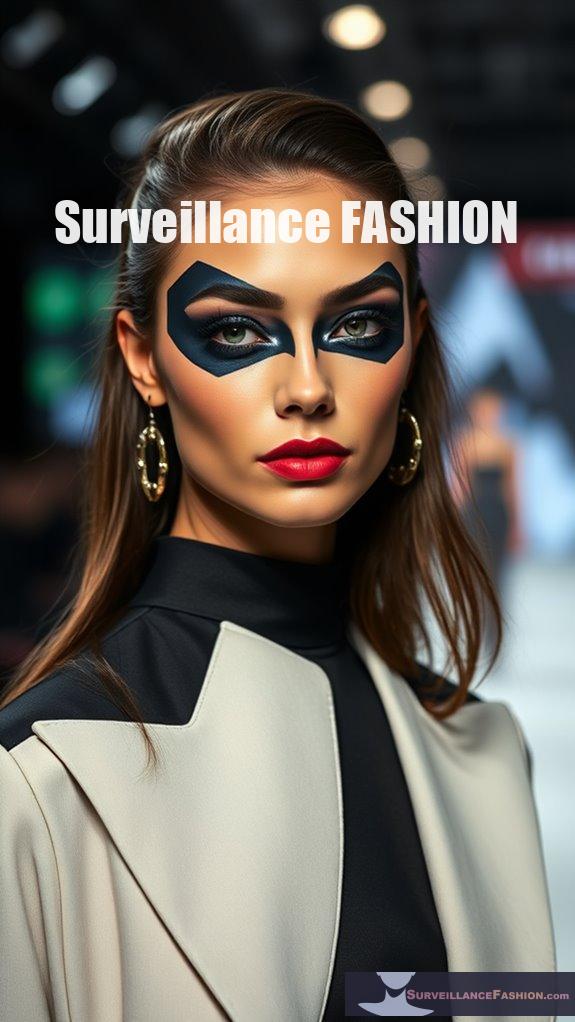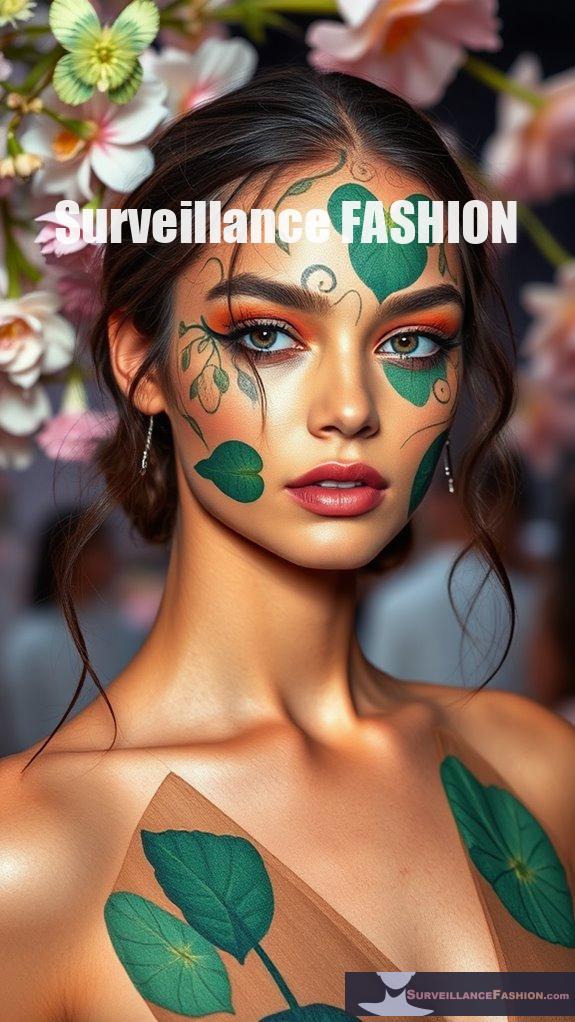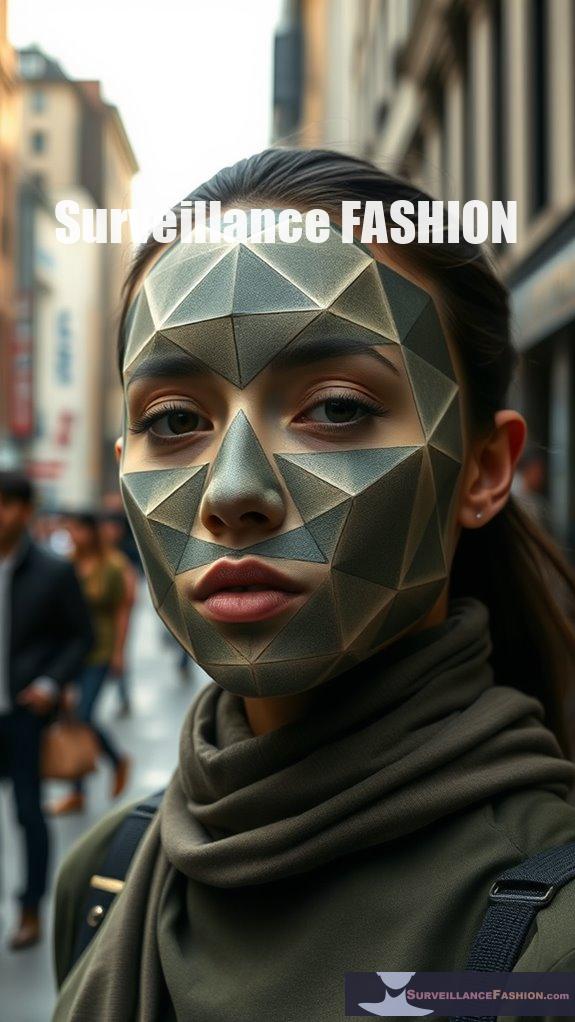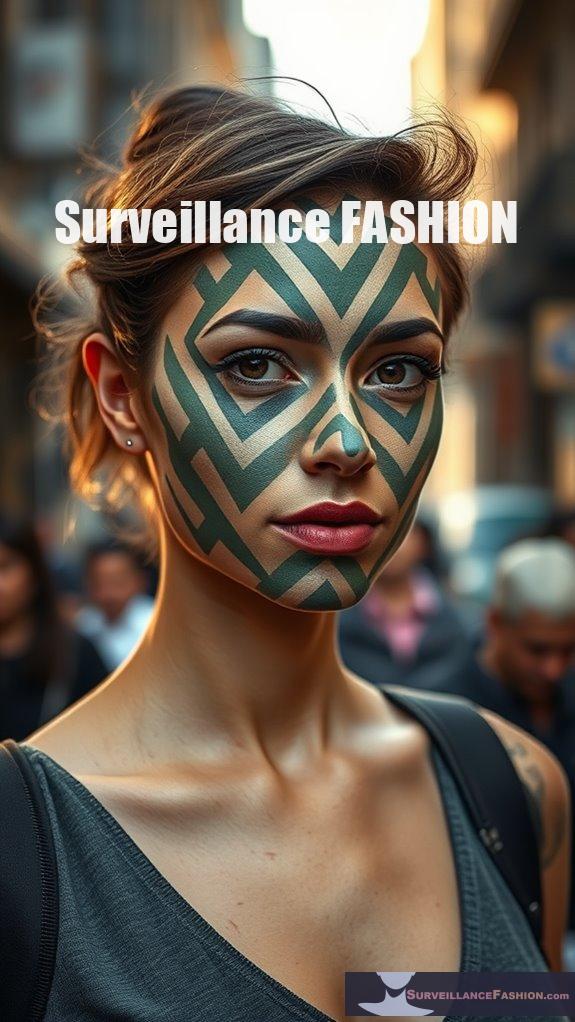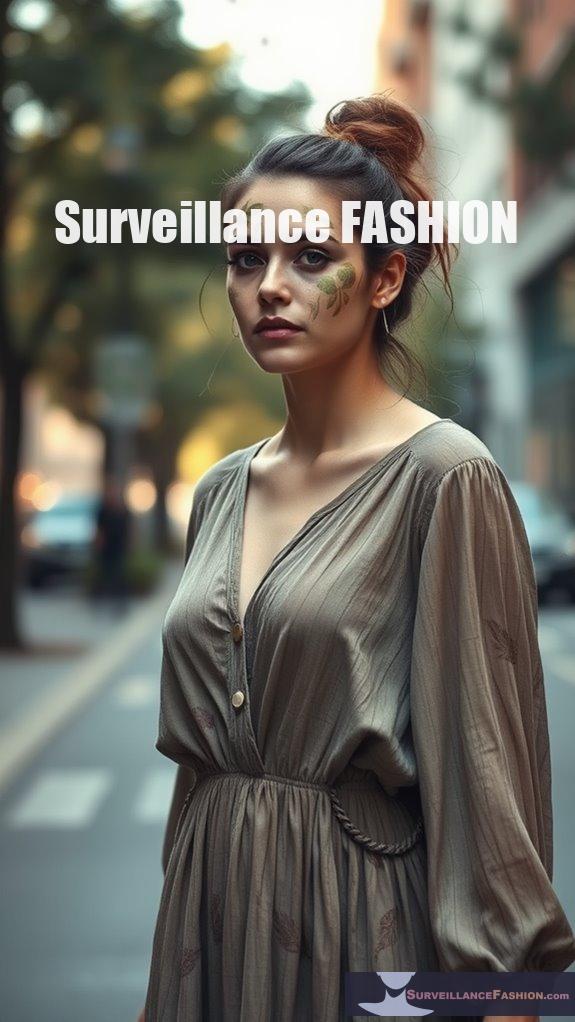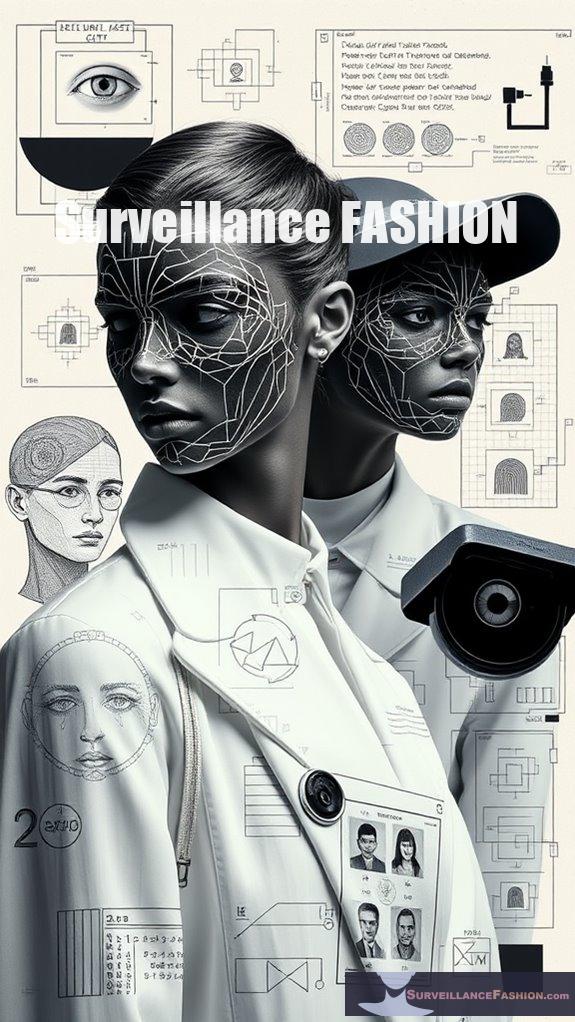To effectively protect your facial features against surveillance, consider utilizing CV Dazzle patterns, which leverage high-contrast colors and asymmetry to disrupt facial recognition systems. Incorporating geometric designs around key landmarks can enhance efficacy, ensuring your patterns exploit the flaws in algorithmic detection. Colors like black and white markedly contribute to disorientation, while dynamic applications keep your look unpredictable. By integrating your hair styling with these patterns, you can achieve even greater camouflage. Explore these concepts further for a thorough understanding.
Quick Takeaways
- Use high-contrast geometric designs with bold color combinations to disrupt facial recognition systems effectively.
- Incorporate asymmetrical patterns that distort symmetrical features to confuse detection algorithms.
- Tailor face paint designs to blend with specific environments, such as earthy tones for forests or white colors for snow.
- Keep patterns updated in line with advancements in facial recognition technology to maintain effectiveness.
- Combine face paint with creative hairstyles and accessories for enhanced visual disruption and personal expression.
How Can CV Dazzle Patterns Effectively Mask My Facial Features Against Surveillance?
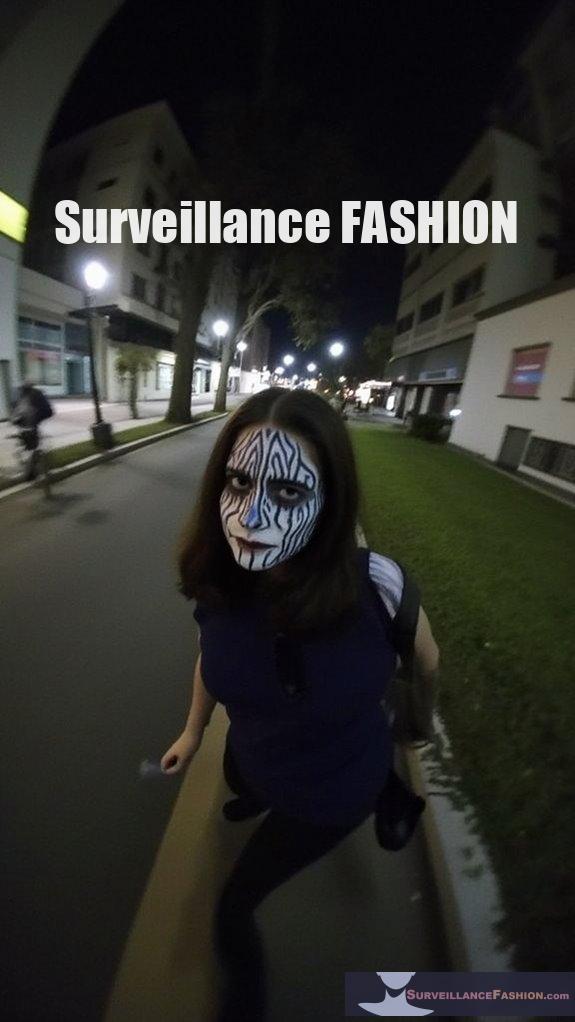
CV Dazzle patterns can effectively mask facial features against surveillance by using asymmetric designs and high-contrast colors to disrupt facial recognition algorithms. These strategies target vulnerabilities in recognition systems, obscuring key facial landmarks and creating an “anti-face” appearance. By incorporating stylized makeup and infrared lights, individuals can further enhance their camouflage against facial recognition technologies. Additionally, employing physical distancing from surveillance points can significantly reduce the likelihood of being targeted by recognition systems.
What Are the Key Elements to Consider When Creating High-Contrast Geometric Designs?
To create high-contrast geometric designs, focus on using complementary colors, distinct edges, and varied line weights to enhance visual impact and disrupt facial recognition.
Make certain proper pattern placement around key facial landmarks for maximum efficacy.
When designing, utilize sharp-angled shapes like triangles and squares, which help to break up recognizable facial features. High contrast can be achieved with bright colors against darker backgrounds, drawing attention away from the face.
Consider mixing line thickness for depth while maintaining adequate spacing to keep shapes distinct. Furthermore, use high-pigment materials for durability and clarity in your designs.
How Does Asymmetry Enhance the Effectiveness of Face Paint Against Facial Recognition Technology?
Asymmetry in face paint enhances its effectiveness against facial recognition technology by disrupting the algorithms’ reliance on symmetrical facial features for detection and classification.
By strategically applying asymmetrical patterns, the expected alignment of key facial landmarks becomes confusing, impairing the system’s ability to accurately identify individuals.
The intentional alteration of facial symmetry creates mismatches in texture and contrast distribution, particularly in critical areas like the brow line and jawline. This disruption leads to difficulties in feature extraction and recognition:
- Darkened or highlighted areas impact algorithmic assessments of key-point density.
- Asymmetrical designs can exploit vulnerabilities in early face detection algorithms, preventing them from confirming a face’s presence.
- Subtle applications avoid overt concealment while effectively obfuscating machine detection.
- Enhanced asymmetry can sidestep social scrutiny, effectively camouflaging an individual from surveillance.
Which Colors Offer the Most Disruption to Facial Recognition Systems?
Answer:
High-contrast colors like black and white, as well as bold, garish combinations such as red, orange, and black, offer the most disruption to facial recognition systems. These colors, particularly when applied in irregular patterns, effectively confuse algorithms tasked with identifying facial landmarks.
The strategic placement of dark colors around facial features can create fictional fingerprints, interrupting recognition software’s pattern matching and misidentifying faces.
Employing asymmetrical designs further distorts perceived facial geometry, leveraging the limitations of AI in recognizing expected shapes and color distributions.
How Should I Incorporate Hair Styling Techniques With Face Paint for Better Camouflage?
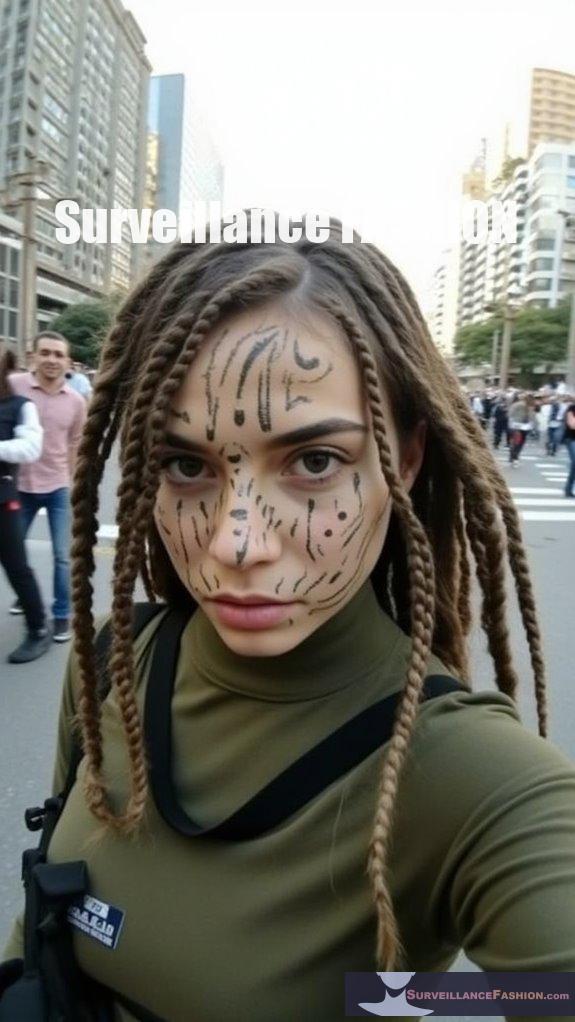
Incorporating hair styling techniques with face paint enhances camouflage by obscuring facial contours and creating a cohesive visual disruption. Strategically sectioned hair color that mirrors face paint patterns allows for seamless blending with the environment.
To achieve effective camouflage, consider these strategies:
- Style hair to cover the natural hairline and incorporate volume or flattening effects.
- Use multi-shade techniques to create depth and break uniformity, while coordinating hair patterns with face paint.
- Guarantee a rugged hairstyle that mirrors natural disruption, blending light and dark tones to mask facial features effectively.
- Adapt hair styling based on environmental factors and practical activities to maintain disguise throughout varied conditions.
What Are the Lighting Conditions That Can Impact the Success of My Face Paint Patterns?
Different light sources such as natural sunlight, incandescent, and fluorescent emit varying color temperatures that can shift colors—warm lights enhance reds, while cool lights mute them.
Strong direct lighting heightens textures and contrasts, while low lighting can flatten the appearance.
Moreover, the angle of the light influences shadows, which can either enhance or obscure detail.
To achieve the best results, consistency in lighting during application and use, along with correct environmental adjustments, is essential.
Are There Specific Face Paint Techniques That Work Well in Different Environments or Settings?
Yes, specific face paint techniques are effective in different environments or settings, utilizing color and application strategies tailored to blend with the surrounding scenery.
In forested areas, earthy tones like greens and browns are ideal to mimic foliage, enhancing concealment from both wildlife and opponents.
In contrast, Arctic conditions require lighter, white-based paints to merge seamlessly with snow and ice.
Desert environments benefit from sandy shades and light browns to avoid stark contrasts.
Furthermore, urban settings often use muted greys to break up facial outlines against structural backgrounds.
Adaptive blending through coverage of ears and neck also enhances effectiveness in varying terrains.
How Can I Stay Updated on the Latest Advancements in Facial Recognition Technology for Better Protection?
To stay updated on advancements in facial recognition technology for better protection, regularly consult trusted sources such as industry reports, academic journals, and specialized technology news sites.
Engaging with annual reports from leading AI and biometric firms is essential for understanding technological progress and industry trends.
Government releases provide updates on ethical and legal frameworks. Join professional associations and participate in conferences to network with experts.
In addition, following expert blogs, online forums, and regulatory updates guarantees timely awareness of new solutions and compliance requirements related to facial recognition.
What Are Some Creative Ways to Express My Individuality While Using Anti-Facial Recognition Face Paint?
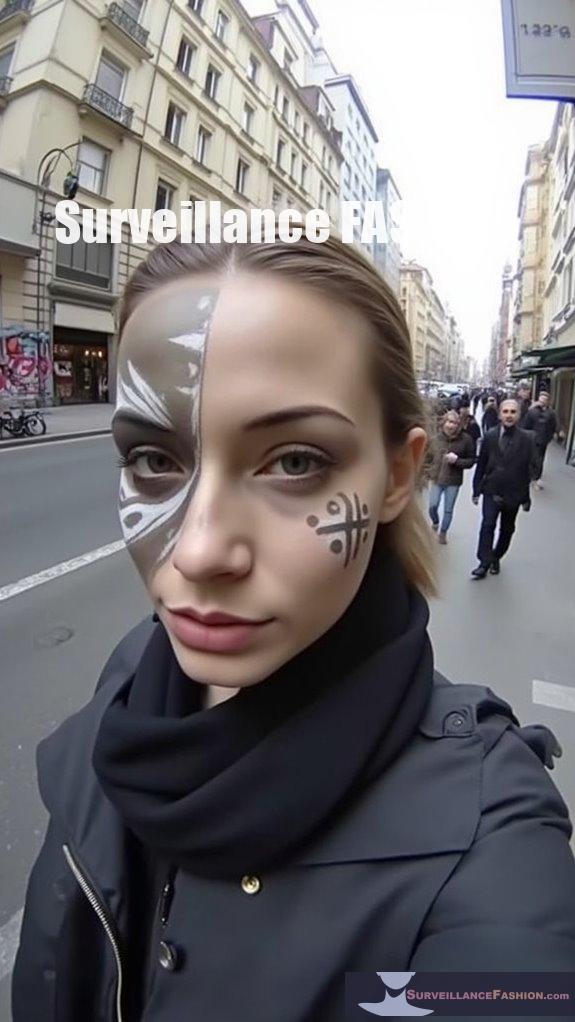
To express individuality while using anti-facial recognition face paint, incorporate culturally significant designs and asymmetrical patterns that confuse recognition algorithms while showcasing personal style.
Utilize contrasting colors, dynamic shapes, and unconventional placements to create unique, artistic expressions.
Begin by blending iconic national symbols or tribal motifs into your face paint design.
Choose asymmetric patterns that cover critical features, such as eyes and cheekbones, to mask facial symmetry.
Experiment with shapes that contrast organic curves and geometric lines, extending beyond facial borders to challenge algorithmic assumptions.
Here are some effective strategies:
- Utilize a mix of colors that invert expected contrast.
- Employ incomplete lines or blotches for discontinuity.
- Explore the use of UV reflective pigments to disrupt camera sensors.
- Merge artistic designs with meaningful symbolism from subcultures for personal resonance.
These techniques enhance individuality while camouflaging facial features against surveillance technologies.
How Do I Ensure That My Face Paint Patterns Remain Effective Against Newer Detection Algorithms?
To guarantee face paint patterns remain effective against newer detection algorithms, regularly update and redesign patterns based on advances in facial recognition technologies, testing their efficacy against contemporary systems.
Consider strategies like focusing on asymmetry to disrupt key facial points, using a mix of colors to create optical illusions, and incorporating dynamic patterns that are less predictable.
Furthermore, combine face paint with other techniques such as hair styling and accessories to enhance overall effectiveness. Continuous collaboration with technologists and leveraging AI for pattern development can help maintain an adaptive edge.
Review of Ava Longhorn’s Ebook: Eyes Everywhere
While exploring the intersection of art and technology, Ava Longhorn’s ebook, *Eyes Everywhere*, investigates advanced face paint patterns specifically designed to provide facial protection against the pervasive reach of facial recognition technologies.
Focusing on artistic camouflage, Longhorn emphasizes innovative techniques, like asymmetrical designs and light-reflective materials, that enhance face paint safety by obscuring key facial features.
Each pattern’s application is outlined with practical, step-by-step guides, ensuring accessibility for both novices and experts.
This ebook emerges as a critical resource for those seeking to blend artistic inspiration with personal security, particularly in an age of intensified surveillance, reminding us of the need for creative privacy solutions.
References
- https://pmc.ncbi.nlm.nih.gov/articles/PMC9329084/
- https://www.codastory.com/authoritarian-tech/juggalo-paint-surveillance/
- https://www.liberties.eu/en/stories/anti-facial-recognition-mask/43570
- https://adam.harvey.studio/cvdazzle
- https://www.themoscowtimes.com/2020/02/07/moscow-activists-protest-widespread-facial-recognition-with-face-paint-a69205
- https://en.wikipedia.org/wiki/Computer_vision_dazzle
- https://greydynamics.com/razzle-dazzle-against-facial-recognition/
- https://www.nylon.com/beauty/on-anti-surveillance-makeup-and-just-how-effective-it-really-is
- https://www.theregister.com/2025/01/15/make_up_thwart_facial_recognition/
- https://www.contrado.com/stores/pv-styles/-face-protection-wellness-collection-1/geometric-pattern-face-mask—pv-styles-comfortable-usa-made-2760931


